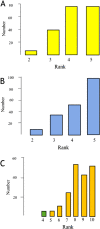Knowledge, attitude, and practice of artificial intelligence in emergency and trauma surgery, the ARIES project: an international web-based survey
- PMID: 35144645
- PMCID: PMC8832812
- DOI: 10.1186/s13017-022-00413-3
Knowledge, attitude, and practice of artificial intelligence in emergency and trauma surgery, the ARIES project: an international web-based survey
Abstract
Aim: We aimed to evaluate the knowledge, attitude, and practices in the application of AI in the emergency setting among international acute care and emergency surgeons.
Methods: An online questionnaire composed of 30 multiple choice and open-ended questions was sent to the members of the World Society of Emergency Surgery between 29th May and 28th August 2021. The questionnaire was developed by a panel of 11 international experts and approved by the WSES steering committee.
Results: 200 participants answered the survey, 32 were females (16%). 172 (86%) surgeons thought that AI will improve acute care surgery. Fifty surgeons (25%) were trained, robotic surgeons and can perform it. Only 19 (9.5%) were currently performing it. 126 (63%) surgeons do not have a robotic system in their institution, and for those who have it, it was mainly used for elective surgery. Only 100 surgeons (50%) were able to define different AI terminology. Participants thought that AI is useful to support training and education (61.5%), perioperative decision making (59.5%), and surgical vision (53%) in emergency surgery. There was no statistically significant difference between males and females in ability, interest in training or expectations of AI (p values 0.91, 0.82, and 0.28, respectively, Mann-Whitney U test). Ability was significantly correlated with interest and expectations (p < 0.0001 Pearson rank correlation, rho 0.42 and 0.47, respectively) but not with experience (p = 0.9, rho - 0.01).
Conclusions: The implementation of artificial intelligence in the emergency and trauma setting is still in an early phase. The support of emergency and trauma surgeons is essential for the progress of AI in their setting which can be augmented by proper research and training programs in this area.
Keywords: Artificial intelligence; Decision making; Emergency surgery; Laparoscopy; Research; Robotic surgery; Survey; Trauma surgery.
© 2022. The Author(s).
Conflict of interest statement
The authors declare that they have no competing interests.
Figures


Similar articles
-
Surgeons' perspectives on artificial intelligence to support clinical decision-making in trauma and emergency contexts: results from an international survey.World J Emerg Surg. 2023 Jan 3;18(1):1. doi: 10.1186/s13017-022-00467-3. World J Emerg Surg. 2023. PMID: 36597105 Free PMC article.
-
Knowledge, attitudes and practices of using Indocyanine Green (ICG) fluorescence in emergency surgery: an international web-based survey in the ARtificial Intelligence in Emergency and trauma Surgery (ARIES)-WSES project.Updates Surg. 2024 Sep;76(5):1969-1981. doi: 10.1007/s13304-024-01853-z. Epub 2024 May 27. Updates Surg. 2024. PMID: 38801604
-
Artificial intelligence in surgery: the emergency surgeon's perspective (the ARIES project).Discov Health Syst. 2022;1(1):9. doi: 10.1007/s44250-022-00014-6. Epub 2022 Dec 6. Discov Health Syst. 2022. PMID: 37521114 Free PMC article. Review.
-
Future Medical Artificial Intelligence Application Requirements and Expectations of Physicians in German University Hospitals: Web-Based Survey.J Med Internet Res. 2021 Mar 5;23(3):e26646. doi: 10.2196/26646. J Med Internet Res. 2021. PMID: 33666563 Free PMC article.
-
Surgery utilizing artificial intelligence technology: why we should not rule it out.Surg Today. 2023 Nov;53(11):1219-1224. doi: 10.1007/s00595-022-02601-9. Epub 2022 Oct 3. Surg Today. 2023. PMID: 36192612 Review.
Cited by
-
Balancing Ethics and Innovation: Can Artificial Intelligence Safely Transform Emergency Surgery? A Narrative Perspective.J Clin Med. 2025 Apr 30;14(9):3111. doi: 10.3390/jcm14093111. J Clin Med. 2025. PMID: 40364137 Free PMC article.
-
Artificial intelligence in gynecologic and obstetric emergencies.Int J Emerg Med. 2025 Feb 10;18(1):20. doi: 10.1186/s12245-025-00820-8. Int J Emerg Med. 2025. PMID: 39924503 Free PMC article. Review.
-
Introduction to Artificial Intelligence for General Surgeons: A Narrative Review.Cureus. 2025 Mar 1;17(3):e79871. doi: 10.7759/cureus.79871. eCollection 2025 Mar. Cureus. 2025. PMID: 40171361 Free PMC article. Review.
-
Indocyanine green fluorescence-guided surgery in the emergency setting: the WSES international consensus position paper.World J Emerg Surg. 2025 Feb 13;20(1):13. doi: 10.1186/s13017-025-00575-w. World J Emerg Surg. 2025. PMID: 39948641 Free PMC article.
-
Surgeons' perspectives on artificial intelligence to support clinical decision-making in trauma and emergency contexts: results from an international survey.World J Emerg Surg. 2023 Jan 3;18(1):1. doi: 10.1186/s13017-022-00467-3. World J Emerg Surg. 2023. PMID: 36597105 Free PMC article.
References
-
- Bellman R. An introduction to artificial intelligence: can computers think? San Francisco: Boyd & Fraser Pub Co; 1978.
-
- Mascagni P, Vardazaryan A, Alapatt D, Urade T, Emre T, Fiorillo C, Pessaux P, Mutter D, Marescaux J, Costamagna G, Dallemagne B. Artificial intelligence for surgical safety: automatic assessment of the critical view of safety in laparoscopic cholecystectomy using deep learning. Ann Surg. 2021 May 24. - PubMed
MeSH terms
LinkOut - more resources
Full Text Sources

